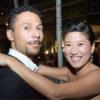-
Posts
4,881 -
Joined
-
Last visited
-
Days Won
132

Ray Singer replied to Tai's topic in General Nihonto Related Discussion

Ray Singer replied to Pteradon's topic in Military Swords of Japan

Ray Singer replied to BIG's topic in General Nihonto Related Discussion

Ray Singer replied to Ray Singer's topic in Auctions and Online Sales or Sellers

Ray Singer replied to Ray Singer's topic in Auctions and Online Sales or Sellers

Ray Singer replied to Ray Singer's topic in Auctions and Online Sales or Sellers

Ray Singer replied to Ray Singer's topic in Auctions and Online Sales or Sellers

Ray Singer replied to Ray Singer's topic in Auctions and Online Sales or Sellers

Ray Singer replied to Ray Singer's topic in Auctions and Online Sales or Sellers

Ray Singer replied to Ray Singer's topic in Auctions and Online Sales or Sellers

